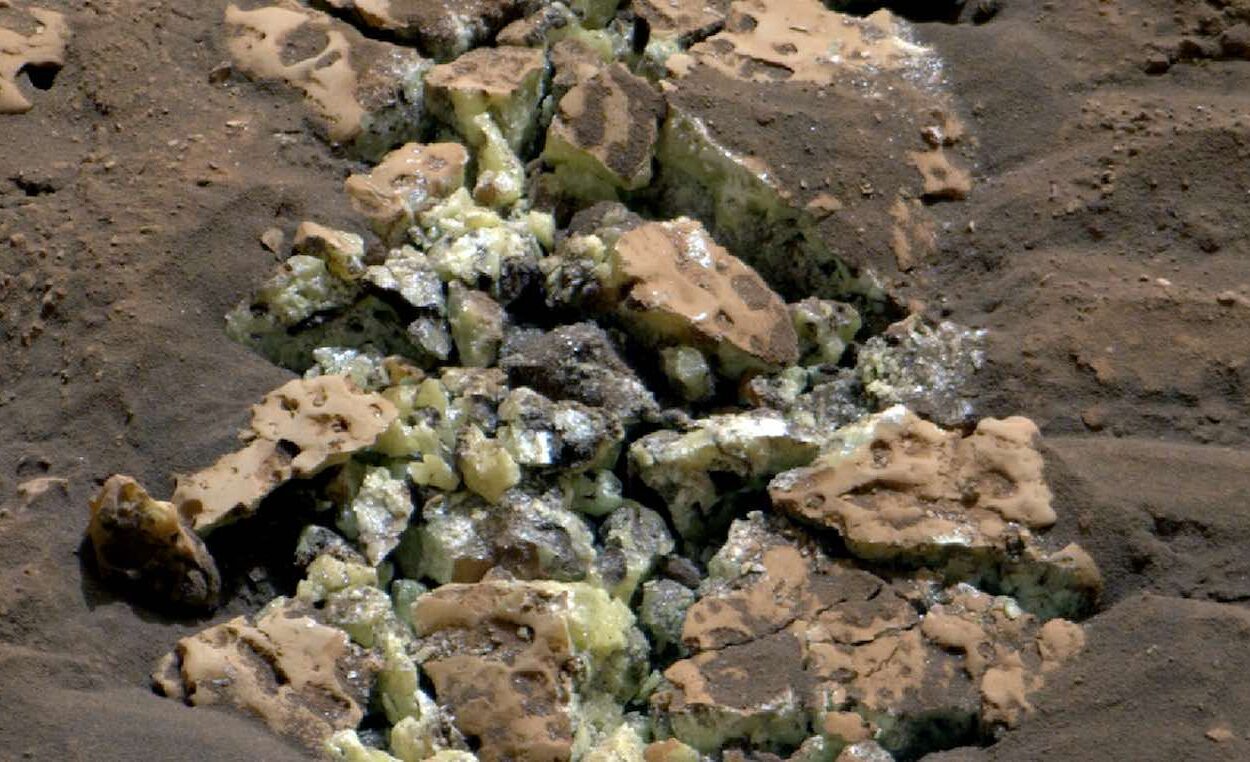NASA’s Curiosity rover has made a surprising discovery on Mars – rocks composed entirely of yellow sulfur crystals. This is the first time that pure sulfur rocks have been identified on the Red Planet, a discovery that isn’t linked to the region currently under investigation by the rover.
Since October 2023, Curiosity has been studying an area of Mars rich in sulfates, a type of salt that forms when water evaporates. While previous findings have recognized minerals comprising a blend of sulfur and other substances, the rock recently discovered by Curiosity is composed solely of elemental or pure sulfur.
“This pure sulfur forms under very specific conditions that scientists haven’t linked with the history of this location,” explained a NASA spokesperson. “Curiosity found an entire field of these bright rocks, similar to the one it crushed.”
The discovery was made as Curiosity was navigating within the Gediz Vallis channel, a groove that winds down part of Mount Sharp, a 3-mile (5-kilometer) tall mountain. The rover has been climbing the base of this mountain since 2014.
NASA is still uncertain about the connection between the elemental sulfur and other sulfur-based minerals in the vicinity. Ashwin Vasavada, Curiosity’s project scientist from NASA’s Jet Propulsion Laboratory, likened discovering a field of pure sulfur stones to “finding an oasis in the desert.”
“It shouldn’t be there, so now we need to explain it. Discovering strange and unexpected things is what makes planetary exploration so exciting,” Vasavada said.
CNN reports that Vasavada and his team have observed evidence of bright white calcium sulfate, also known as gypsum, within cracks on the Martian surface. These are essentially hard-water deposits left by ancient groundwater flows.
While sulfur is not a rare element—it’s the tenth most common element by mass in the universe and the fifth most common on Earth—it may be present near the Lunar crater Aristarchus. The distinctive colors of Jupiter’s enormous moon Io are believed to result from forms of molten, solid, and gaseous sulfur.
Despite being associated with the smell of rotten eggs due to hydrogen sulfide gas, NASA confirms that elemental sulfur is odorless.
Share this exciting news about Martian exploration with your friends!
Source: Good News Network





Leave a Comment